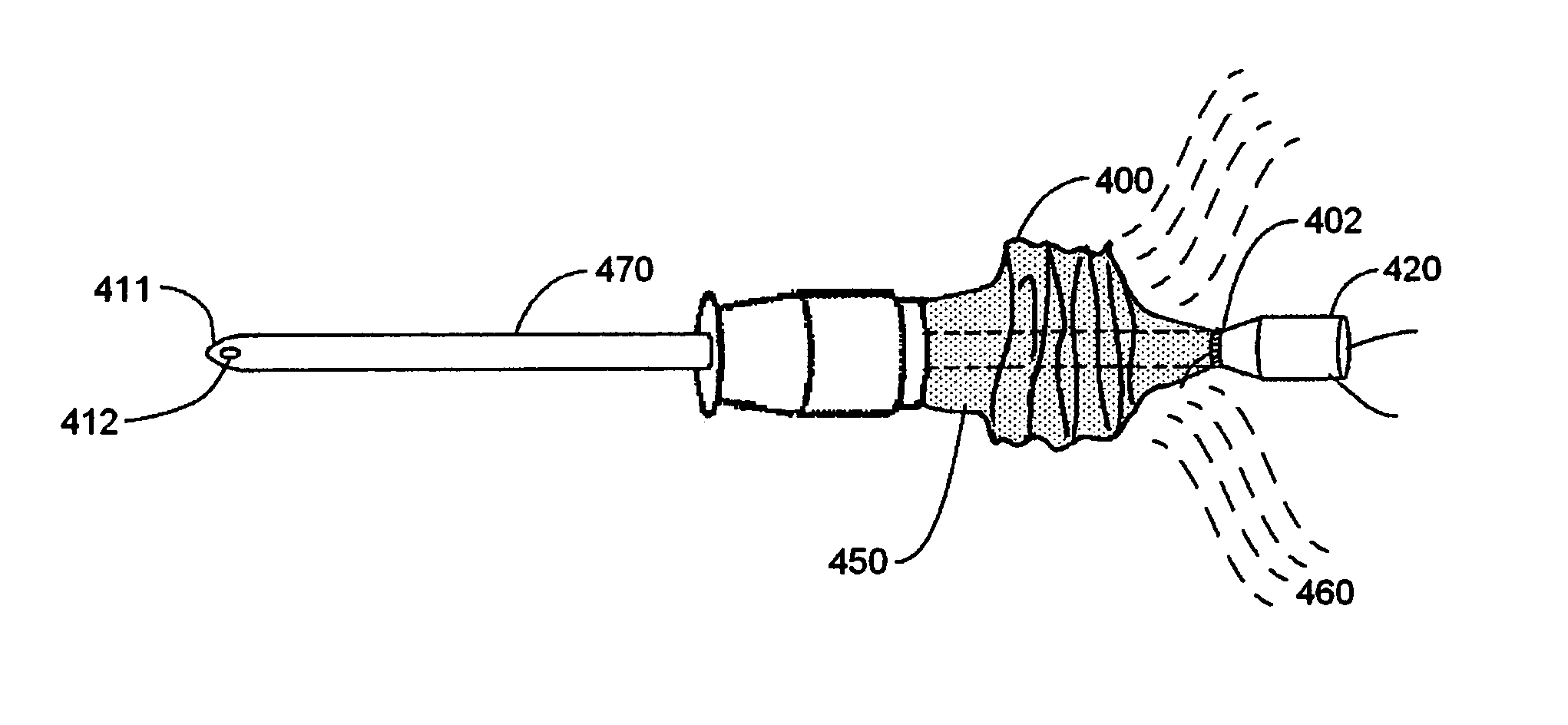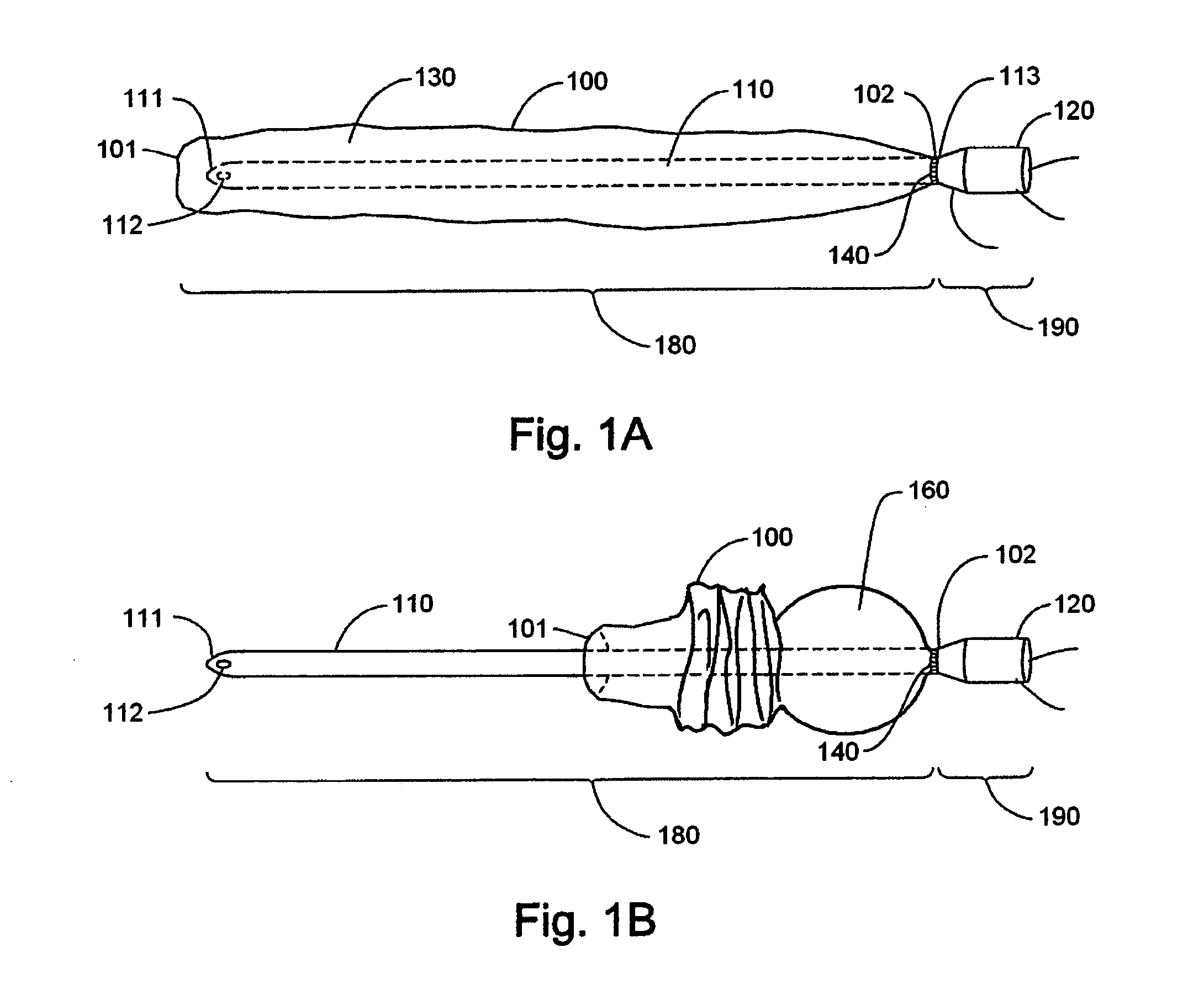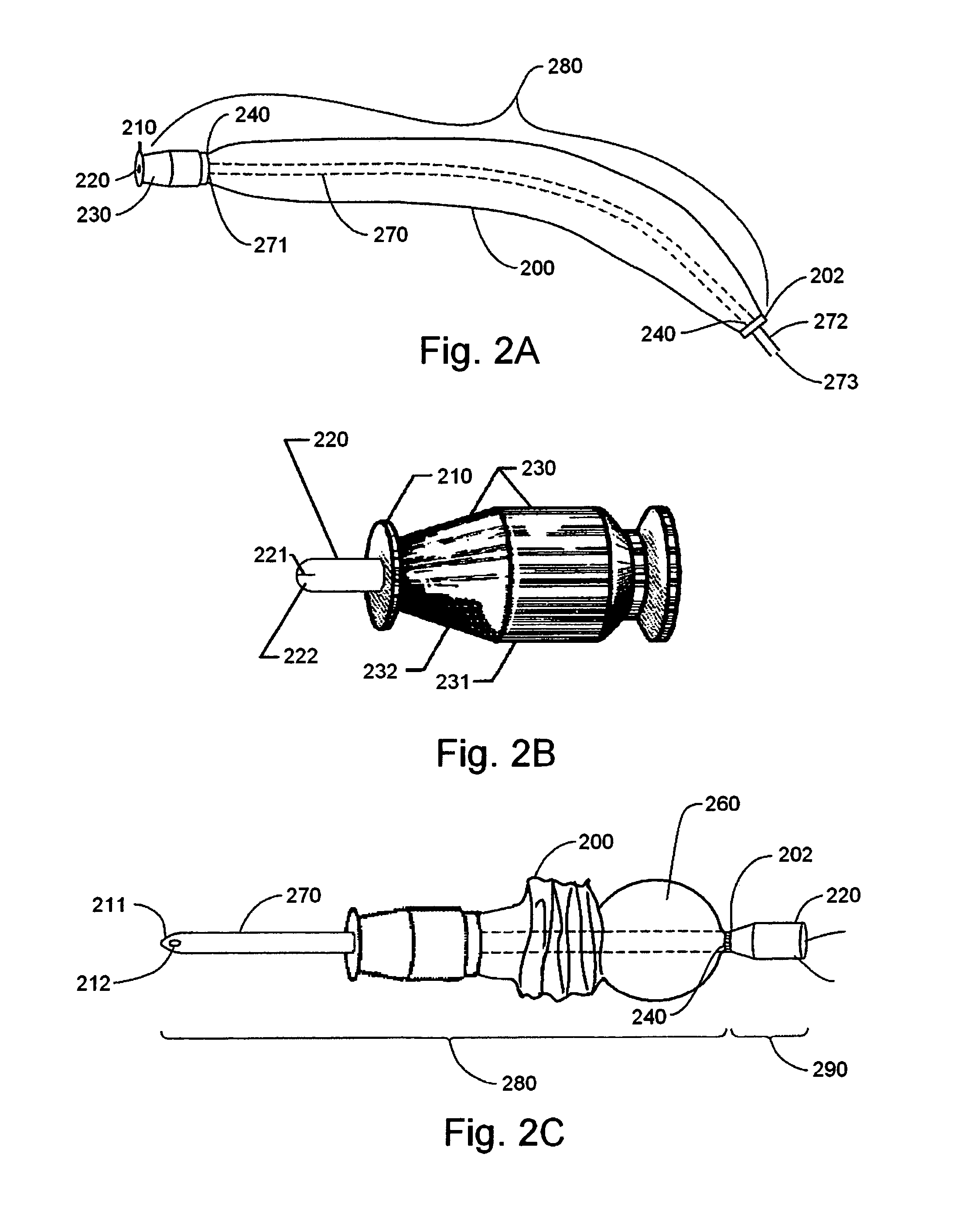Catheter assembly having protective sheath
a catheter and protective technology, applied in the field of catheters, can solve the problems of lack of satisfactory catheterization kits, the need for intermittent catheterization of individuals, and the risk factor of bladder cancer, so as to achieve efficient self-catheterization process, relieve the build-up of air, and facilitate the effect of self-catheterization
- Summary
- Abstract
- Description
- Claims
- Application Information
AI Technical Summary
Benefits of technology
Problems solved by technology
Method used
Image
Examples
Embodiment Construction
[0022]The present invention includes devices and methods for urinary catheterization for patients who want to self-catheterize in a sterilie, safe, and efficient manner. In order to achieve the level of sterility required to avoid infection, a sheath 100 is used to cover the portion of the catheter that is insertable into the urethra 180, as shown in FIGS. 1A and 1B. The sheath covers the catheter 110 from time of manufacture and storage until it is fully inserted. The user pulls the catheter 110 through the sheath 100 without touching the catheter 110 itself. As the user pulls the catheter 110 through the sheath 100, excess air builds up 160 at the distal end of the sheath 102. This excess air 160 needs to be released from inside the sheath 100 to the outside atmosphere to allow further advancement of the catheter 110. The sheath 100 in the present invention is made from a gas-permeable material, which allows air to flow through the sheath 100 preventing build-up 160 towards the di...
PUM
| Property | Measurement | Unit |
|---|---|---|
| density | aaaaa | aaaaa |
| density | aaaaa | aaaaa |
| density | aaaaa | aaaaa |
Abstract
Description
Claims
Application Information
 Login to View More
Login to View More - R&D
- Intellectual Property
- Life Sciences
- Materials
- Tech Scout
- Unparalleled Data Quality
- Higher Quality Content
- 60% Fewer Hallucinations
Browse by: Latest US Patents, China's latest patents, Technical Efficacy Thesaurus, Application Domain, Technology Topic, Popular Technical Reports.
© 2025 PatSnap. All rights reserved.Legal|Privacy policy|Modern Slavery Act Transparency Statement|Sitemap|About US| Contact US: help@patsnap.com



